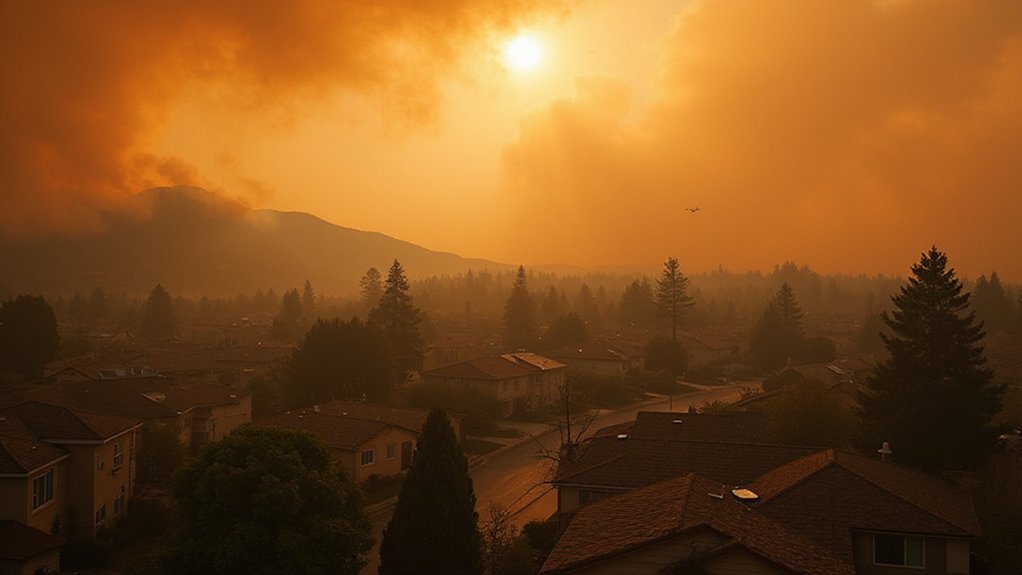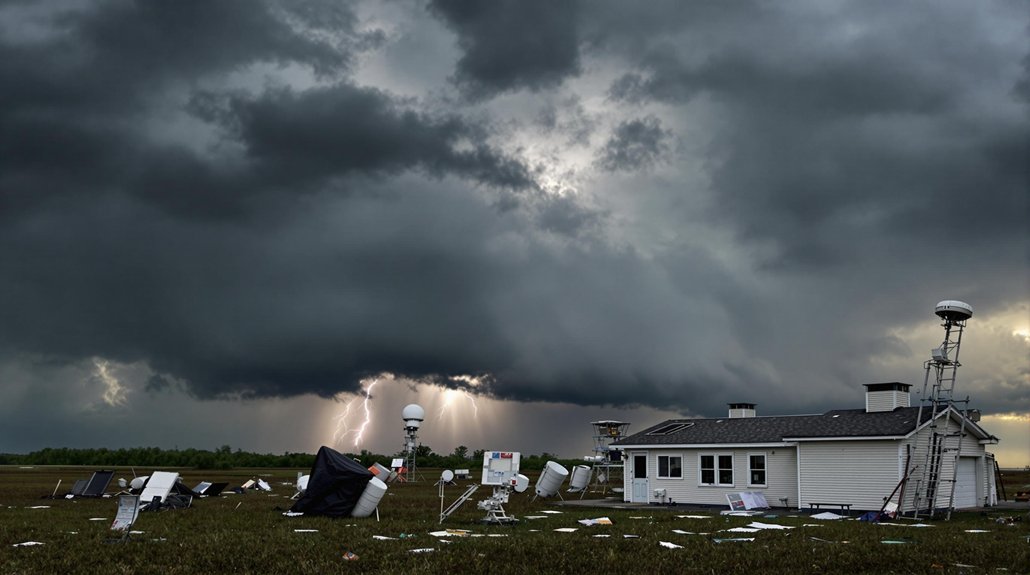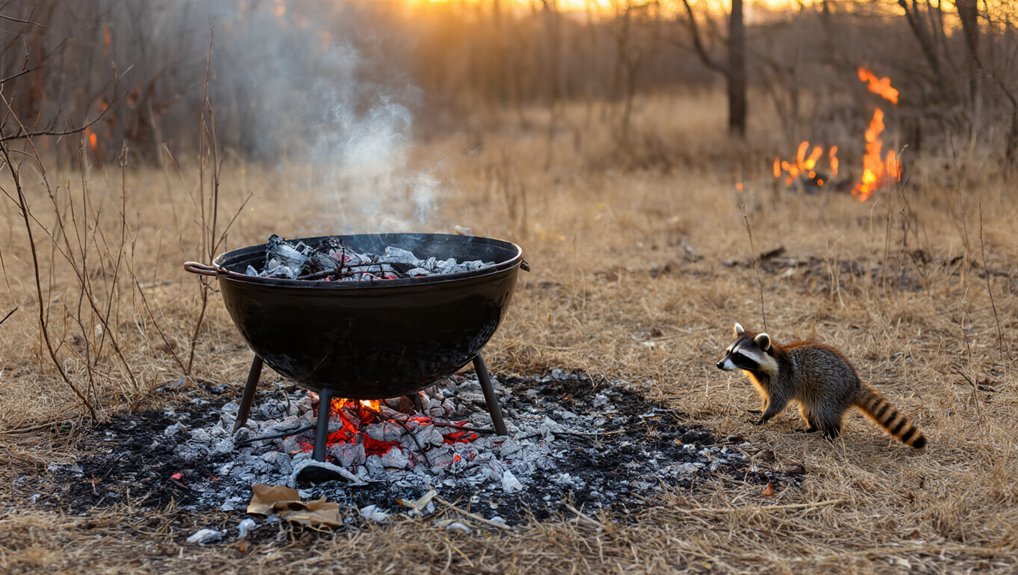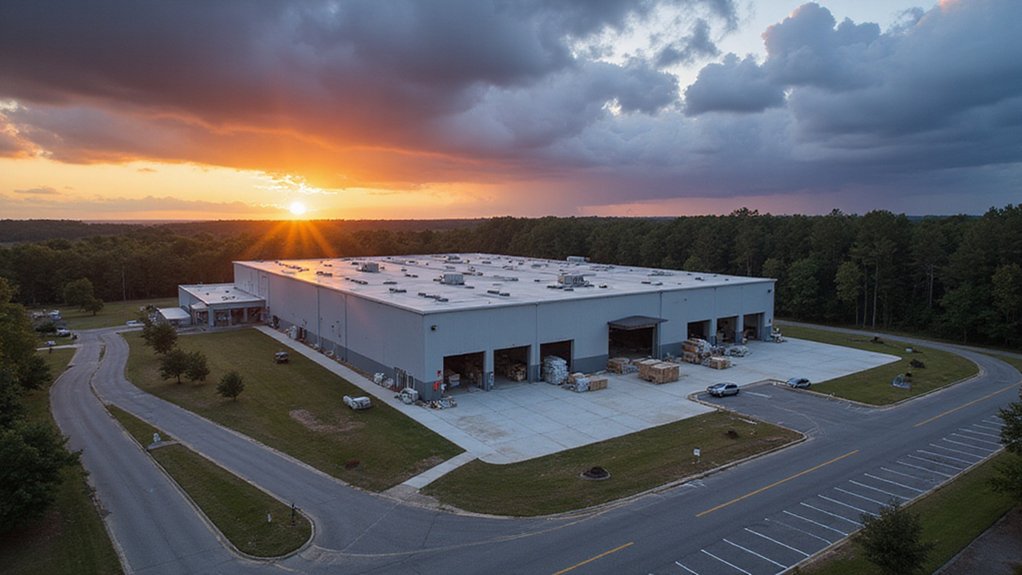While many Americans believe their homes provide sanctuary from environmental hazards, the reality couldn’t be further from the truth. Wildfire smoke, a toxic cocktail containing up to 90% PM2.5 particles, infiltrates buildings with alarming ease. Your cozy living room? Not as safe as you think.
Recent studies paint a grim picture. PM2.5 from wildfires is ten times more harmful than PM2.5 from other sources. Ten. Times. Worse. During severe fires, concentrations have measured 75 times higher than WHO standards. Good luck with that.
Scientists have discovered wildfire smoke particles are ten times deadlier than other pollution. Sleep tight, America!
The health impacts are nothing short of terrifying. Exposure increases cardiovascular and respiratory risks dramatically, with heavy smoke raising the chance of out-of-hospital cardiac arrests by a whopping 70%. Between 2007 and 2020, wildfire smoke contributed to approximately 11,415 non-accidental deaths yearly in the contiguous U.S. That’s over 30 deaths daily from something most people can’t even see.
Indoor filtration helps, sure, but it’s hardly a perfect solution. When buildings burn, the smoke gets even nastier. Human-produced materials add toxic constituents like PCBs and PBDEs to the mix. Fantastic.
The long-term outlook? Not great. Fine particles reach your alveoli and potentially enter your bloodstream. They don’t always clear properly, leading to chronic lung disease. Research shows higher risk of death from cardiovascular, respiratory, and endocrine diseases with long-term exposure. Heart disease, lung disease, cancer—the trifecta nobody wants.
Mental health takes a hit too. One additional day of wildfire smoke is associated with a 2% increase in suicide deaths in rural counties. Monthly exposures compound psychological stress, with cumulative effects on cognitive abilities. These particles can trigger neuroinflammation that directly impacts mental health conditions.
Wildfires contribute up to 25% of total PM2.5 concentrations across the U.S., reaching 50% in Western regions. The toxic gases include acrolein, formaldehyde, and organic acids. Sounds delicious, right?
Bottom line: your home isn’t the safe haven you imagined. That smoky smell? It’s not just unpleasant—it’s potentially lethal. With approximately 80% of wildfires being human-caused in the U.S., the situation reflects our own impact on environmental health. Marginalized communities face higher health risks due to limited access to adequate housing and healthcare resources during wildfire events.
References
- https://www.epa.gov/wildfire-smoke-course/why-wildfire-smoke-health-concern
- https://pmc.ncbi.nlm.nih.gov/articles/PMC4245643/
- https://ysph.yale.edu/news-article/long-term-exposure-to-wildfire-smoke-associated-with-higher-risk-of-death/
- https://tsapps.nist.gov/publication/get_pdf.cfm?pub_id=934224
- https://salatainstitute.harvard.edu/how-exposure-to-wildfire-smoke-impacts-human-health-now-soon-and-later/









